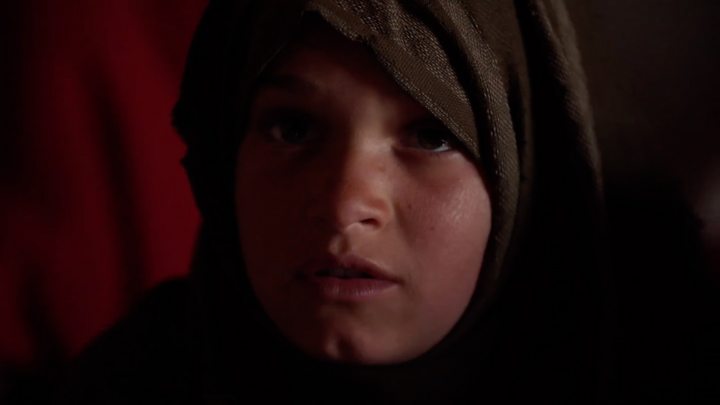For the first time in 18 years, the US government seems serious about withdrawing its forces from Afghanistan and winding up the longest war in its history.
Since October, US officials and representatives of the Taliban have held seven rounds of direct talks - aimed at ensuring a safe exit for the US in return for the insurgents guaranteeing that Afghan territory is not used by foreign militants and won't pose a security threat to the rest of the world.
A US-led military coalition drove the Taliban from power in 2001 for sheltering al-Qaeda, the militant group behind the 9/11 attacks.
A rare consensus about resolving the conflict peacefully, both inside and outside Afghanistan, means peace has never been so close. During a visit to Afghanistan in late June, US Secretary of State Mike Pompeo said the Trump administration was aiming for "a peace deal before September 1st".
But the US-Taliban talks in Qatar's capital, Doha - as well as intra-Afghan dialogue involving the insurgents and some Afghan officials - are only the first phase of a complicated process with an uncertain outcome - and there are many hurdles to overcome.
Does there need to be a ceasefire?
While the US has reversed its refusal to talk directly to the Taliban, intense fighting and unprecedented numbers of airstrikes by the US and Afghan militaries are still going on all over the country. And while the Taliban negotiate they now control and influence more territory than at any point since 2001.
The war in Afghanistan is now the deadliest conflict in the world, causing more casualties than the fighting in Syria, Libya or Yemen.
Patterns of violence have changed dramatically in recent years. The vast majority of those being killed and injured now are Afghans - civilians, police and soldiers, and Taliban fighters.In February, the UN said civilian deaths reached a record high in 2018. It said more than 32,000 civilians had in total been killed in the past decade.
Taliban fighters are also regularly killed in large numbers in airstrikes, night raids and ground fighting.
Given the continued stalemate with the insurgents, US President Donald Trump is keen to end the war, which, according to US officials, costs about $45bn (£34bn) annually. His indication to withdraw most or all of his 14,000 forces in the near future caught everyone by surprise, including the Taliban.
There are also nearly 1,000 British troops in Afghanistan as part of Nato's mission to train and assist the Afghan security forces.But even if the US and the Taliban resolve their major issues, the Afghans themselves will need to sort out a number of key internal issues - including a ceasefire, dialogue between the Taliban and the government, and most importantly, the formation of a new government and political system.
Ideally, a ceasefire would precede presidential elections later this year and the Taliban would take part - but the latter seems unlikely.
Without a full or even partial ceasefire, there are fears that poll irregularities and a possible protracted political turmoil over the results could undermine any peace process and may increase political instability.
If they do, a new government in Kabul could negotiate terms with the Taliban, unless a peace deal had been reached before the vote. Whether that government served a full term or held power on an interim basis while intra-Afghan power-sharing options were discussed is unclear.
But elections could also be further delayed or suspended - and the current government's term extended - while a mutually agreed mechanism to establish a new government, acceptable to all sides including the Taliban, is sought.
Will the Taliban end up back in government?
Creating a temporary neutral government or a governing coalition, that could even include the Taliban, is another option being looked at in this scenario.
A loya jirga - or grand assembly - of Afghans could also be called to choose an interim government which would hold elections once US troops have left and the Taliban has been reintegrated.An international conference similar to the one in Bonn, Germany, in 2001 is another suggestion to help chart a future course for the country.
It would include Afghan players, major powers and neighbouring states - but this time also with the participation of the Taliban.
Several Taliban leaders have told me they need time to enter mainstream Afghan society and prepare for elections.
Would former enemies be able to work together?
There will be very difficult issues to surmount after a conflict that has left hundreds of thousands of casualties on all sides, including government forces, insurgents and civilians.
For example, the Taliban do not accept the current constitution and see the Afghan government as "a US-imposed puppet regime".
So far President Ghani's administration has not been involved in direct talks with the insurgents who refuse to talk to a government they don't recognise.Therefore, given the internal rivalries and diverse agendas of various local actors, the intra-Afghan phase of the peace process might prove more difficult than the US-Taliban talks.
However, there are positive signs.
Two rounds of intra-Afghan dialogue took place in Moscow earlier this year when Afghan politicians including ex-president Hamid Karzai, former commanders and civil society members, including women, met Taliban representatives to discuss ending the war.



